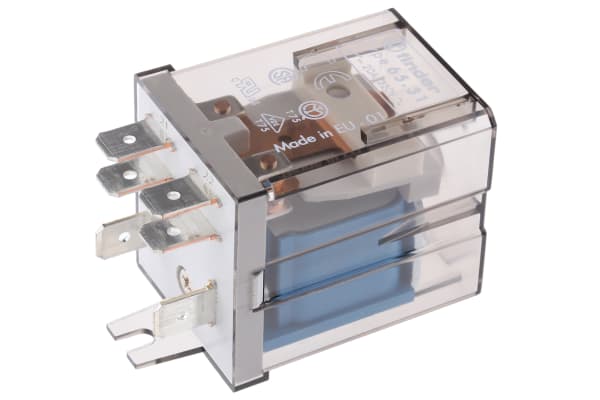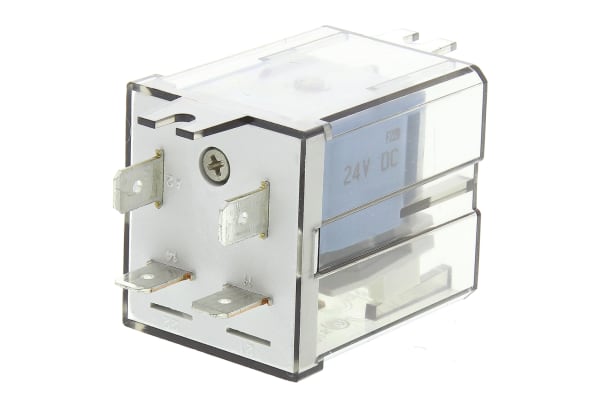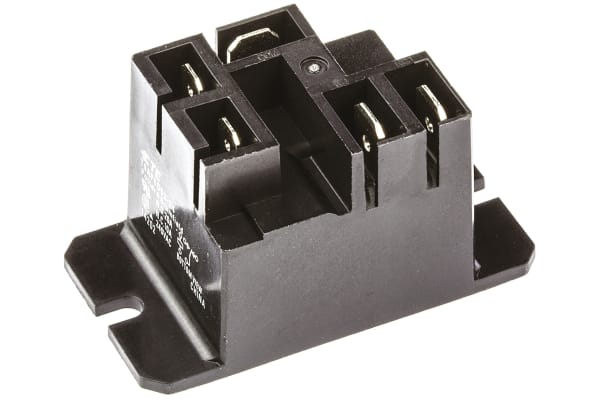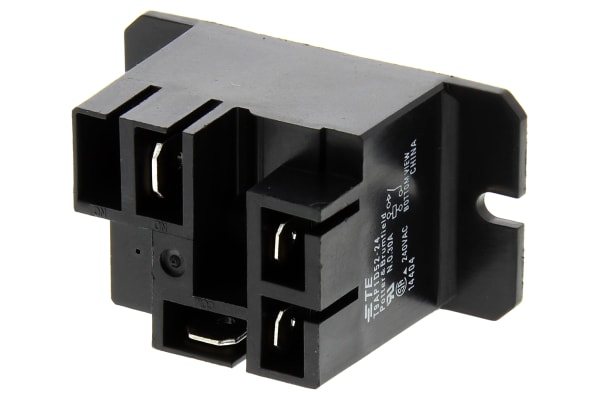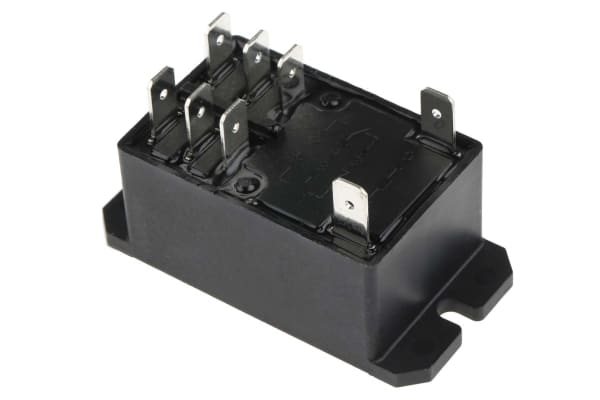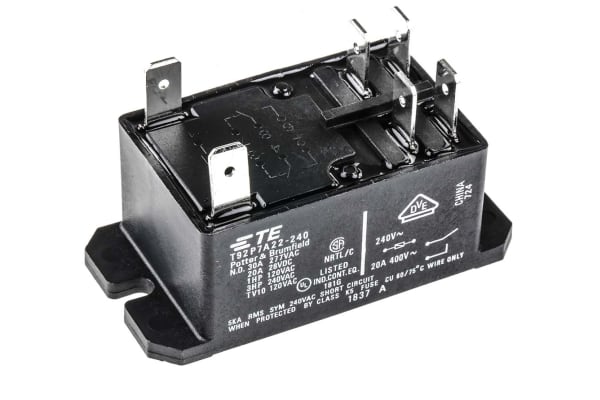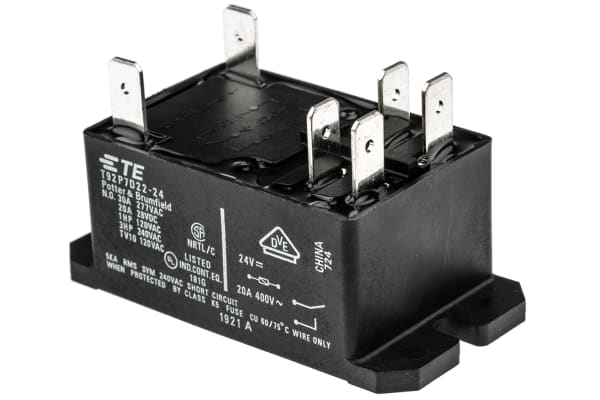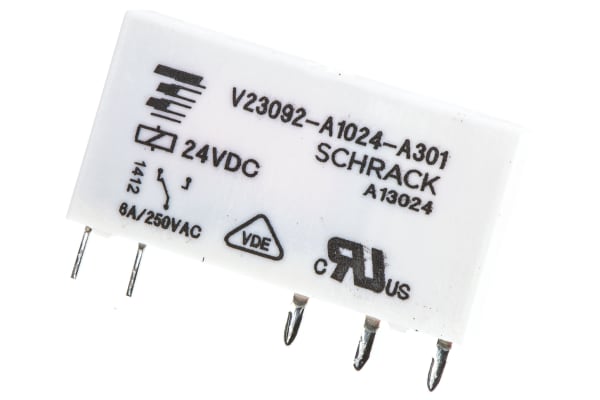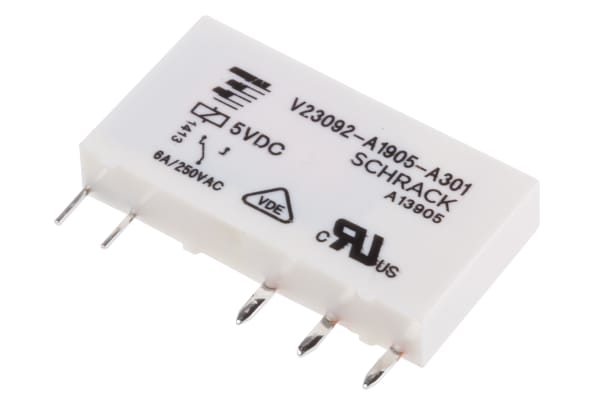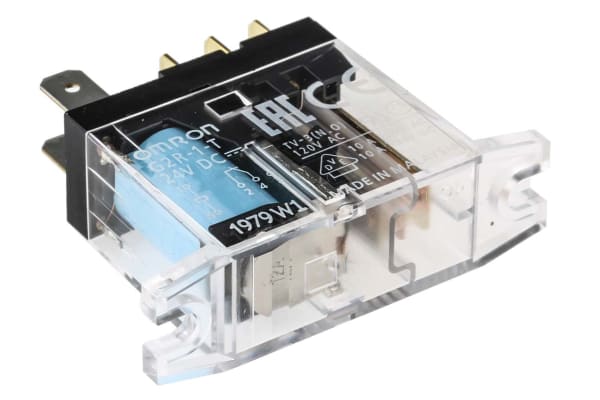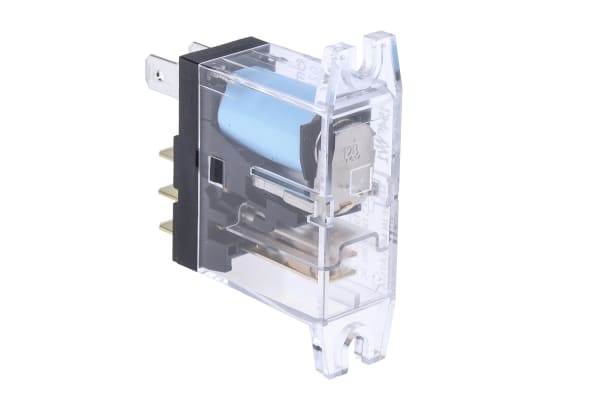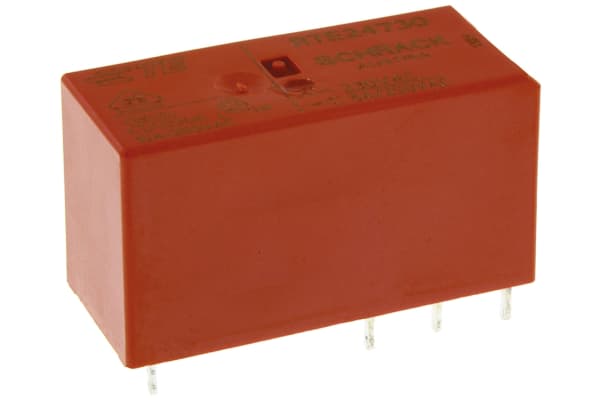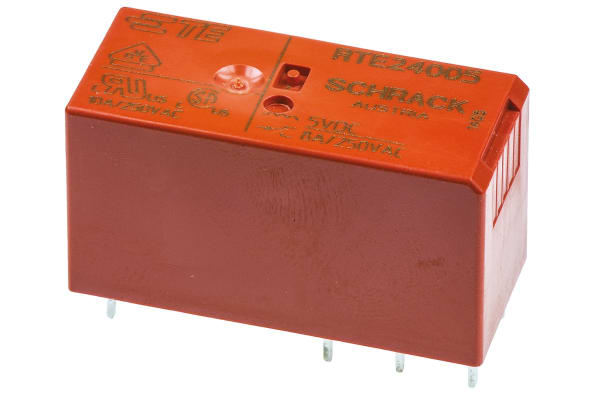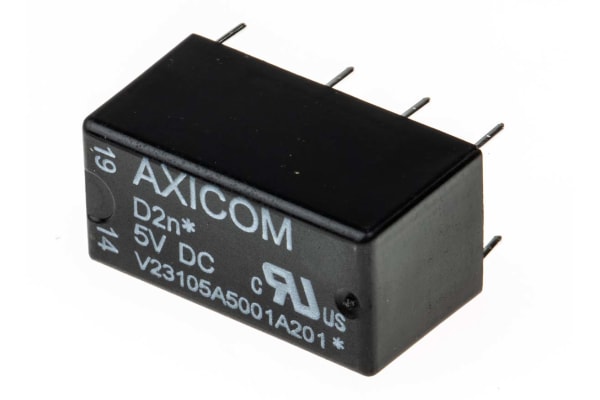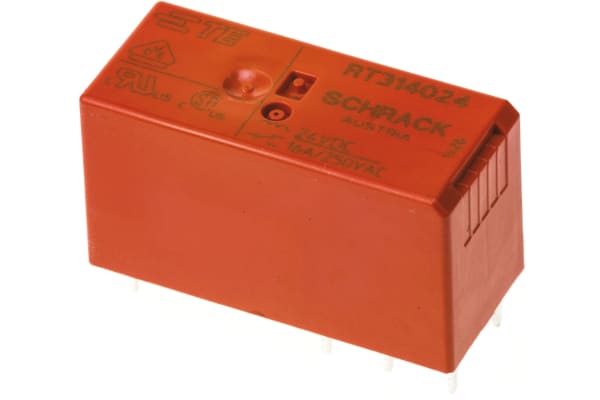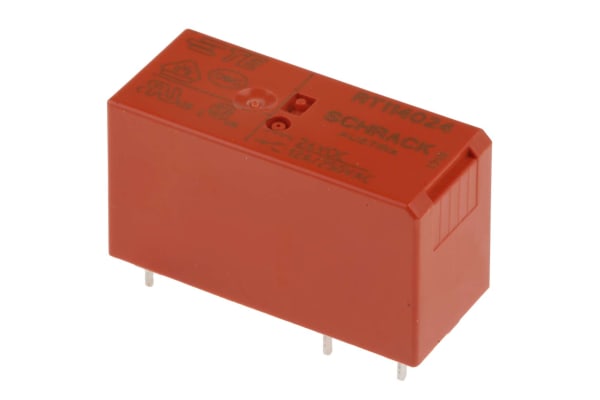Non-Latching Relays
Relays are electrical switches that are operated by electrical impulses with the primary function to open and close a circuit, they can also be referred to as industrial switches. There are 2 main types available, latching and non–latching relays.How do non-latching relays work?Non-latching relays are in a normally closed (NC) position and will stay in this state without power. When power passes through the circuit, the relay switched to a normally open (NO) position by using an internal coil to generate a magnetic force, holding this NO position. Once the current is turned off, it returns to the NC position. This makes non-latching relays well suited to push-button applications like keyboards and micro-controller input buttons.What are non-latching relays used for?Non-latching relays are highly durable and versatile components, making their performance long lasting and suitable for use in a wide range of applications, such as:Automotive enginesHousehold appliancesIndustrial machineryMedical equipmentTelecommunications equipmentWhat is the difference between latching and non-latching relays?Both types of relays in similar in design and function, however, a significant difference between them is that a latching relay will remain in the last position it when it was last powered, whereas a non-latching goes back to its normal position. This makes each more type of relay suitable for different applications. Considerations when selecting a relayWhen choosing a relay, it is important to consider a number of specifications to ensure it is fit for purpose, some factors include:Coil voltage – the required voltage to actuate the switching mechanism. If a voltage is too high this could damage the components, if it is too low then it will not actuate. Contact configuration – This is the state the contacts are in without power. For example SPST, single pole single throw.Contact material – the relay contacts are available in many materials that have certain properties. Common materials are gold, silver, tin oxide and nickel Coil power – the amount of power (watts) the coil operates at. This must match the power in the circuit for correct function. Coil resistance – the amount of resistance (ohms) in the circuit that the coil creates.
-
Finder, 230V ac Coil Non-Latching Relay DPDT, 16A Switching Current Plug In, 2 Pole, 62.82.8.230.0000
IDR282,783.44 -
Finder, 230V ac Coil Non-Latching Relay SPDT, 20A Switching Current Flange Mount Single Pole, 65.31.8.230.0000
IDR298,097.38 -
Finder, 24V dc Coil Non-Latching Relay SPDT, 20A Switching Current Flange Mount Single Pole, 65.31.9.024.0000
IDR273,133.56 -
Finder, 24V dc Coil Non-Latching Relay SPNO, 30A Switching Current Flange Mount Single Pole, 65.31.9.024.0300
IDR268,833.07 -
TE Connectivity, 24V dc Coil Non-Latching Relay SPDT, 20A Switching Current Flange Mount Single Pole, T9AP5D52-24
IDR105,309.56 -
TE Connectivity, 24V dc Coil Non-Latching Relay SPNO, 30A Switching Current Flange Mount Single Pole, T9AP1D52-24
IDR104,575.33 -
TE Connectivity, 12V dc Coil Non-Latching Relay SPNO, 30A Switching Current Flange Mount Single Pole, T9AP1D52-12
IDR94,610.78 -
TE Connectivity, 240V ac Coil Non-Latching Relay DPDT, 30A Switching Current Flange Mount, 2 Pole, T92P11A22-240
IDR401,309.14 -
TE Connectivity, 240V ac Coil Non-Latching Relay DPNO, 30A Switching Current Plug In, 2 Pole, T92P7A22-240 6-1393211-2
IDR377,079.55 -
TE Connectivity, 24V dc Coil Non-Latching Relay DPNO, 30A Switching Current Flange Mount, 2 Pole, T92P7D22-24
IDR246,911.06 -
TE Connectivity, 24V dc Coil Non-Latching Relay SPDT, 6A Switching Current PCB Mount Single Pole, V23092-A1024-A301
IDR151,775.83 -
TE Connectivity, 12V dc Coil Non-Latching Relay SPDT, 6A Switching Current PCB Mount Single Pole, V23092A1012A301
IDR136,147.22 -
TE Connectivity, 5V dc Coil Non-Latching Relay SPDT, 6A Switching Current PCB Mount Single Pole, V23092A1905A301
IDR125,972.89 -
Panasonic, 24V dc Coil Non-Latching Relay SPDT, 3A Switching Current PCB Mount Single Pole, DS1E-S-DC24V
IDR91,673.86 -
Omron, 24V dc Coil Non-Latching Relay SPDT, 10A Switching Current Panel Mount Single Pole, G2R-1-T DC24
IDR54,962.36 -
Omron, 12V dc Coil Non-Latching Relay SPDT, 10A Switching Current Panel Mount Single Pole, G2R-1-T DC12
IDR69,542.07 -
Omron, 12V dc Coil Non-Latching Relay SPNO, 20A Switching Current Plug In Single Pole, G4A-1A-E DC12
IDR96,079.24 -
TE Connectivity, 230V ac Coil Non-Latching Relay DPDT, 8A Switching Current PCB Mount, 2 Pole, RTE24730
IDR111,393.18 -
TE Connectivity, 24V dc Coil Non-Latching Relay DPDT, 8A Switching Current PCB Mount, 2 Pole, RTE24024 1-1393243-0
IDR59,577.52 -
TE Connectivity, 5V dc Coil Non-Latching Relay DPDT, 8A Switching Current PCB Mount, 2 Pole, RTE24005
IDR56,640.60 -
TE Connectivity, 24V dc Coil Non-Latching Relay DPDT, 3A Switching Current PCB Mount, 2 Pole, V23105A5005A201
IDR67,549.16 -
TE Connectivity, 5V dc Coil Non-Latching Relay DPDT, 3A Switching Current PCB Mount, 2 Pole, V23105A5001A201
IDR51,500.99 -
TE Connectivity, 24V dc Coil Non-Latching Relay SPDT, 16A Switching Current PCB Mount Single Pole, RT314024 9-1393239-8
IDR71,115.42 -
TE Connectivity, 24V dc Coil Non-Latching Relay SPDT, 12A Switching Current PCB Mount Single Pole, RT114024
IDR62,934.00





